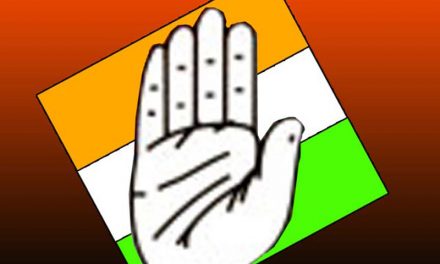Techniques, metrics and best practices exist. What is needed is the organisational will to implement them
Suvrat seems to be navigating a minefield of technology, business, and mindset issues when it comes to Prescott’s IT strategy. A whole range of issues bubble up in his conversations with Alex, his partner at Westing Bros, and as any good consultant focused on solving the strategy problem for a customer, he is asking all the right questions when it comes to business and IT imperatives.
We see that Suvrat has to juggle multiple balls of varying scale and size, and he can’t afford to drop any one of them. Prescott has to address the growth and cost issues and they have to define the IT strategy which is aligned to their business strategy and create operational models. Suvrat’s involvement in operational levels have led to several moments of truth. He realises that Prescott has the opportunity to go for the kill, and emerge the leader, only if it allows itself to see IT as an enabler and a driver, not just as a catalyst but as an engine which can drive growth. However, Prescott’s leadership, or the bulk of it, sees IT as most other enterprises do, of a necessary cost line item to get your reports on time, to get payroll done, to automate a few manual functions.
As he is dealing with the mindsets and inability of most folks to appreciate opportunity, his services team, which helps Prescott at operations level has thrown another spanner in the works. They have exposed their own vulnerability and inertia in terms of using IT to actually drive productivity, and focus only on traditional metrics like volumes and utilisation. He realises when he talks to Alex that while this is partly due to alignment of metrics, it is also due to a more fundamental issue of overall readiness of enterprises and workforce to adopt technology in its entirety, and not just in bits and pieces. The news item which Alex brings up exposes a vulnerability at cultural and mindset level which will take efforts at various levels to plug.
Suvrat seems lost in the multiplicity of issues plaguing this, but if you really get into the depth of this, there are three aspects of this whole puzzle.
First is about value of IT for a company. The question here is this: What really is the business value of IT for an enterprise, in general, and Prescott (or a retailer like Prescott) in particular?
Second is about IT readiness. One can talk about technology readiness rankings for country or economy or industry, but how do you apply this to a specific problem of IT investments for an enterprise in a way that it makes sense to them?
Third is about alignment of business metrics to achieve the outcomes and drive the right behaviours to meet your strategy. Making decisions on investments — technology or otherwise — is the easier part. When one has to align those decisions with strategy and operational plans, and with metrics and behaviour, that is where rubber hits the road.
First is about the business value of IT:
This is the Holy Grail of IT and business and there is no silver bullet answer to this question. The issues involved are multifold and there are multiple variables here including the global macro-economic ones. In spite of tremendous advances in technology and a fair deal of progress in business and economic models, we do not have a way to measure the value of IT for a business in absolute terms.
The importance of IT varies depending upon nature, scale and size of the enterprise. In initial days of IT, money was aplenty, and creativity of IT world was at its peak, budgets were generous and freedom to IT significant. Now the situation is grim, growth has slowed, shareholders hold the board accountable, board asks the CEO, CEO asks CFO, CFO asks CIO and CIO is asking his team and his vendors — How do I measure the value of IT for my business?
In the context of enterprise IT, the business value of any initiative, technology, process, a unit, or a vendor is a measure of its criticality to the core business. This criticality can be further defined in terms of the impact to the five essential dimensions of the business. These dimensions are Revenue, Cost, Risk, Customer Experience and Employee Satisfaction. Any initiative which can positively impact any of the above dimensions in a significant and tangible manner will be taken as having delivered positive business value.
Reducing cost by automation is the easiest part where most of the IT initiatives have focused on. Appropriate investments in IT (for example, for online business for Prescott) can help it create a direct revenue impact. Investing in security technology enables it to reduce risks to business. End-user experience in today’s world is the most critical parameter for businesses and much more so in case of retailers like Prescott. Companies are spending millions of dollars only to make it easier and smoother. Employee engagement and satisfaction is another key catalyst and companies which recognise this and invest in technology to address this have an edge over the others.
There is no mathematical formula that will link the impact on each of these parameters and align it with the spend by companies in IT. However, the impact in each of these can be measured in a tangible manner and the correlation with IT investments at different dimensions can be established by competent consulting firms — assuming Westing is one such firm.
Second is about the IT readiness:
Alex talks about a news report which measures technology readiness of countries which gives India a low ranking. I am not sure of the report but concede the overall point. The key issue here, given that we are talking about Prescott, is what tools and measures do an enterprise have to figure out how much it needs to invest in IT, and why?
An interesting measure I believe is Technology Intensity, coined by Dr Howard Rubin. Tech intensity is the level of technology spending as it relates to business results; as a per cent of revenues and as a per cent of operating expenses. The tech intensity curve can be created by plotting organisations’ IT intensity value (horizontal axis) against their profitability (vertical axis). Increased IT intensity often correlates with improved profitability up to a point where returns will begin to decline — the tech intensity curve. When we see the tech intensity curves for enterprises, industries, economies, we find that the curve always has a peak point. This point signifies the threshold beyond which investments in IT can show diminishing returns. If Suvrat were to create a tech intensity curve for online retailers in India, he would most probably find that Prescott needs to invest more than cut IT costs to gain the leadership. Tech intensity is just one measure, there could be several others. Point is looking for those measures and using them with right mindsets.
Third is about alignment of business metrics with business outcomes:
It seems logical that the key business metrics, which Prescott is pushing are related to growth and revenue and operating margins, like most other businesses at an overall level. If online retail is the next big growth area and an opportunity for Prescott, the revenue share, market share in online and similar metrices have to be aligned to IT investments. You also need to develop key metrics in areas like user experience, vulnerability and tie these into a dashboard where the metrics are cascaded all the way down to lowest levels at operations and to the external and internal partners. We have seen organisations where the metrics are not aligned, and behaviours are contradictory because metrics are misaligned. So the IT operations team focuses on utilisation and volumes and billable hours and cannot think of innovative ideas of costs. If you focus only on costs, then you might compromise on security and user experience which will impact growth in multiple ways.
Suvrat has a tough job at hand but it is not impossible. The issues he is dealing with are nothing new and have been faced by multiple enterprises. Techniques, metrics and best practices exist. What is needed is the organisational will to implement them and perseverance to change the mindsets at all levels. As a consultant, Suvrat has to first help Prescott use these metrics to make them aware of the opportunity that exists for their growth and change their mindsets about IT. Amazon is a great example where they have converted challenge of large unutilised hardware into a business opportunity. Prescott needs to see the opportunity in online retail and look at IT as an enabler. Once they are on board with the opportunity, aligning the investments with right areas and aligning the business metrics are the next natural steps.
Suvrat and Prescott have a choice. They can seize the opportunity or do nothing, take a piecemeal approach, and fall behind and be an also-ran or a has-been.
Disclaimer: The views expressed in the article above are those of the authors’ and do not necessarily represent or reflect the views of this publishing house. Unless otherwise noted, the author is writing in his/her personal capacity. They are not intended and should not be thought to represent official ideas, attitudes, or policies of any agency or institution.










